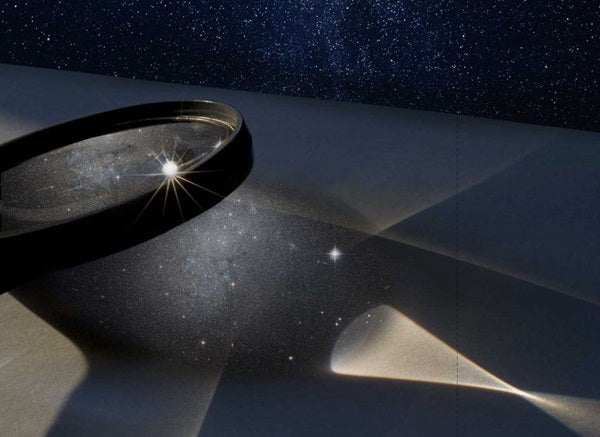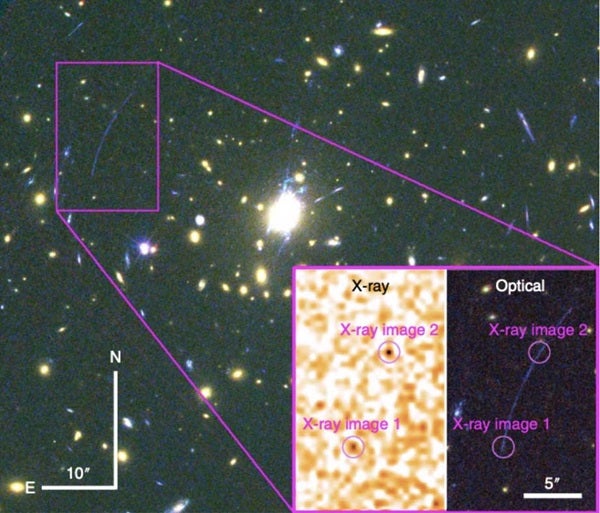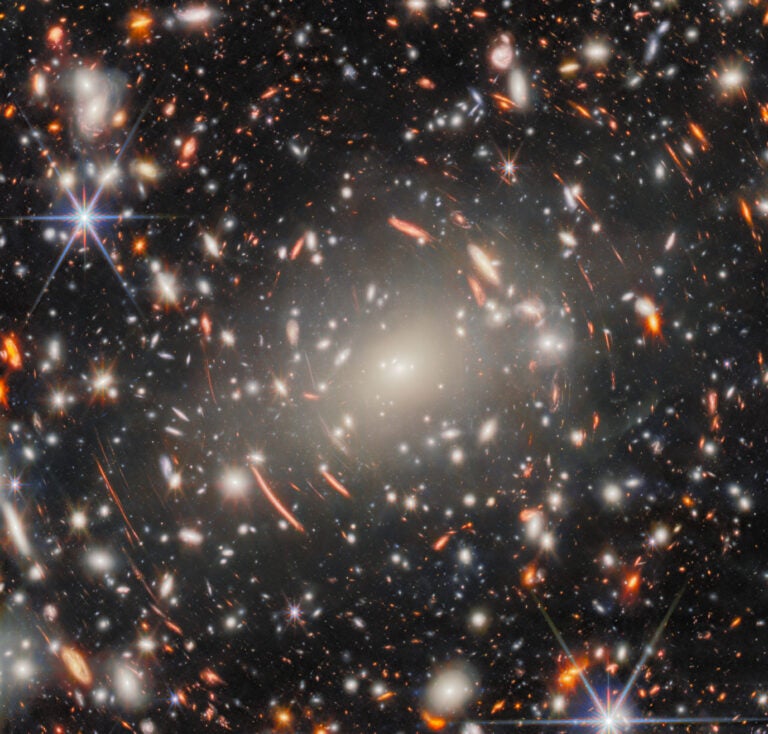To study such a distant galaxy, the researchers took advantage of the fact that massive objects can warp space-time around them and magnify light from background objects. Astronomers have used this effect, called gravitational lensing, to study distant galaxies in various wavelengths of light before. But this is one of the first times researchers using this technique have been able to capture a distant star-forming galaxy in X-rays.
The team’s work demonstrates that this technique is possible with existing telescopes, and shows that it can be a powerful new tool for studying star formation in faraway galaxies.
Magnifying via Gravitational Lensing
To use gravitational lensing, astronomers need to find massive objects that are aligned just right with distant galaxies in the background. They call the intervening massive object, often a galaxy or galaxy cluster, a gravitational lens. This massive “lens” warps the space-time around it; light from the distant galaxy in the background, which would otherwise be blocked by the intervening object, follows the warping and appears to us like an arc of light stretched around the lens.
They discovered that this distant dwarf galaxy, roughly 9 billion light-years away, has two distinct clumps of newly forming stars.
Seeing star formation happening in galaxies with X-rays is difficult because galaxies where stars and star formation make up most of the light are relatively faint. Galaxies whose light mostly comes from the activity of their central black holes, or active galactic nuclei, are generally much brighter and easier to observe.
Observing a faraway star-forming galaxy in X-rays is exciting because those X-rays come from the most massive stars. Specifically, they come from binary systems of massive stars in which one has collapsed into a black hole or neutron star and is consuming matter from the other.
Studying these distant galaxies in X-ray light may help scientists answer outstanding questions about massive stars. Astronomers know massive stars are often in binary systems, but do they always form in pairs or not? Massive stars shed a lot of gases throughout their lives, but in what ways does that affect their environments and how other stars form?
“It’s really a new window into studying the properties of the most massive stars that form in the distant universe,” Bayliss said.












